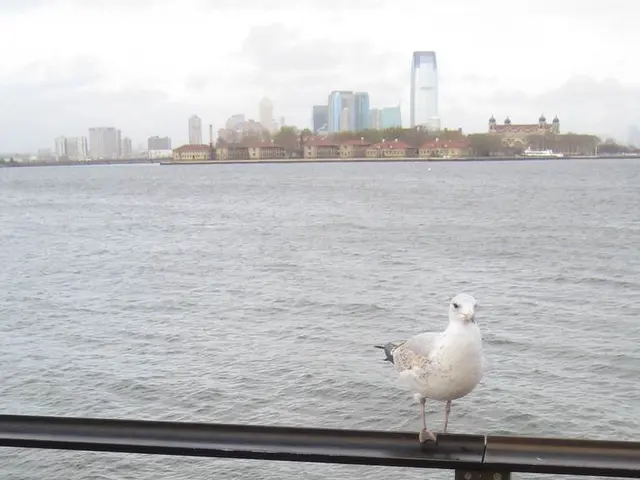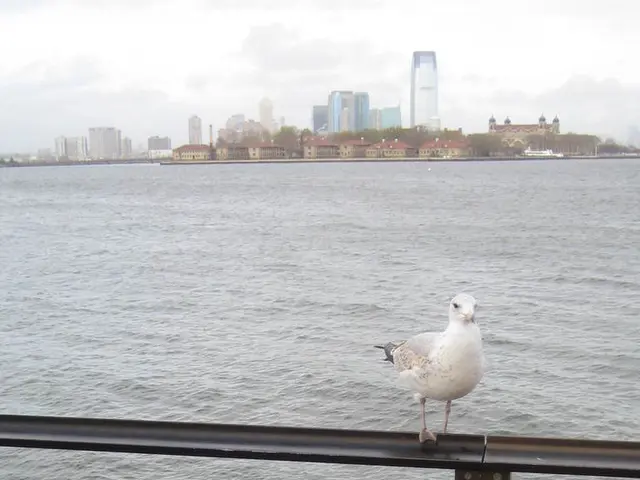Wind Farm Controversy on the Boundary of Laois and Kilkenny
In the heart of Ireland, a community action group named 'NoToSeskinWindFarm' is advocating for a pause in the development of a wind energy project, expressing concerns about potential impacts on native trees, infrastructure, and local communities.
The proposed project, by Seskin Renewable Energy Limited, involves the construction of eight "mega turbines" along the Laois-Kilkenny border, as well as a substation and a 100-meter meteorological mast. The company claims that the project, if successful, would power 36,000 homes.
However, the group and locals are apprehensive. The existing wind energy planning guidelines, dating back to 2006, are currently under review. Walter Foyle, a member of the group, has raised concerns about the height of the proposed turbines, which, at up to 200 meters, would be situated just 700 meters from people's dwellings. He argues that if these turbines were at sea, they would require a minimum of 15km from the shore to comply with safety regulations.
The 'NoToSeskinWindFarm' group is seeking support for a pause in the project until the guidelines are updated to reflect industrial-sized turbines. The group believes that the current guidelines are outdated and do not adequately address modern developments, such as the proposed industrial-scale turbines now being proposed in rural areas.
The Government has promised new planning guidelines for wind farms by the end of last year, but they have not been introduced. Meanwhile, the 2025 Wind Turbine Regulation Bill proposes key updates addressing setbacks, noise, and community engagement. If passed, this bill could address long-standing issues related to wind energy infrastructure and protect rural communities from the impacts of large-scale wind farm developments.
The ongoing debate underscores the tension between Ireland’s urgent climate goals and rural community concerns over large-scale wind farm developments. The country aims for 9GW of onshore wind capacity and 80% renewable electricity by 2030, requiring installation of over 600MW of new capacity annually. This ambitious target necessitates rapid growth in wind energy, but also highlights the need for updated regulations to manage impacts locally.
Submissions against the proposed windfarm closed on Tuesday evening, and a decision is due in September. The historical area of Tae Lane in Durrow could effectively become a construction site if the project proceeds, raising safety concerns and disruption to facilitate turbine traffic and the transportation of heavy turbine parts.
As the debate continues, the 'NoToSeskinWindFarm' group, along with other community action groups across the country, awaits the introduction of a new regulatory framework to better balance Ireland’s climate goals with rural community concerns.
Read also:
- Green Party leader Graf advocates for the shutdown of wood-burning power plants
- Experiments Conducted in Authentic Laboratory Setting
- Washington State Enacts Tax on Sales of Zero-Emission vehicle Credits from Tesla
- Emerging markets will see a total investment of €7.5 billion for climate projects, as allocated by AllianzGI and EIB.








